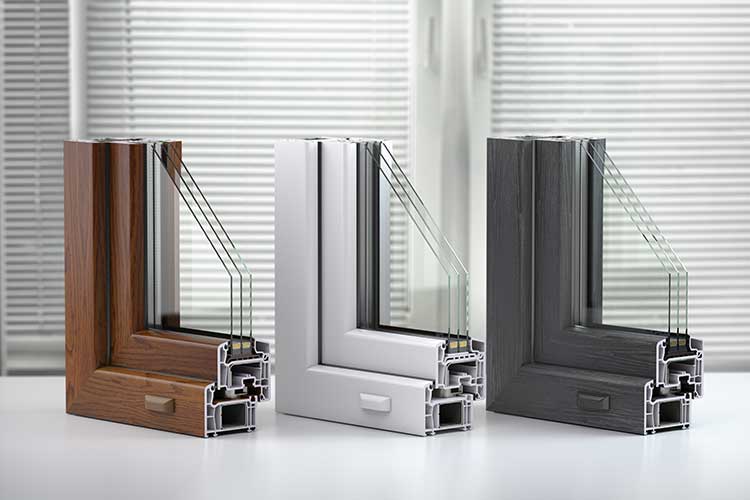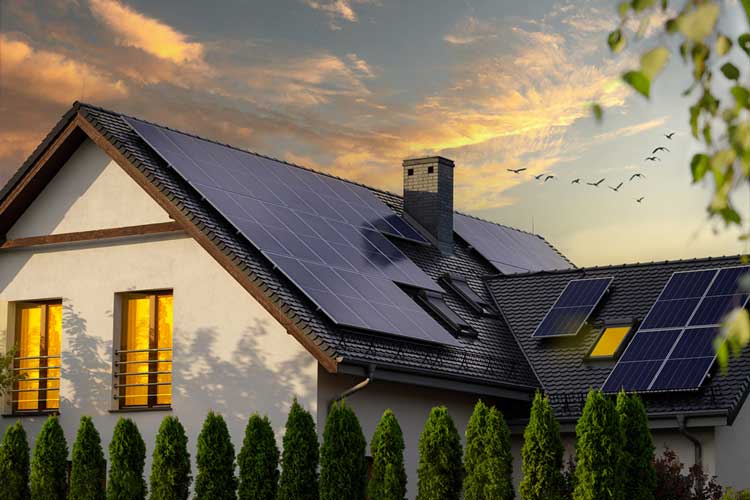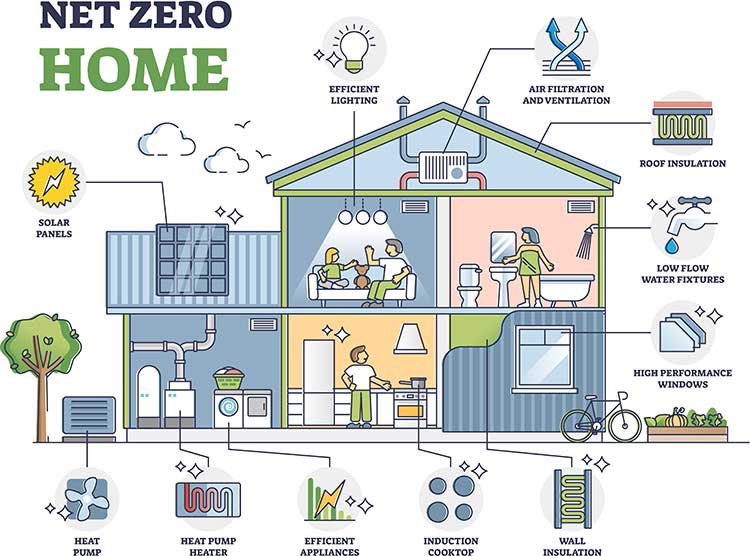Want to Go All-in on Going Green at Home? These Projects are Expensive but Provide Max Savings
Last updated November 2024
Making simple repairs or improvements and changing wasteful habits will yield enormous energy savings for most families. Click here for a list of basic steps that cost nothing or little to do but fix common sources of home-energy waste. And several other projects have some upfront spend, but quickly pay for themselves via lower energy bills.
We describe below improvements that can minime or even completely eliminating your home’s net energy consumption. Unfortunately, most families can’t afford to pay $15,000 or more for a solar energy system, $35,000 for a geothermal heat pump, or $200,000 to $400,000 for a comprehensive green retrofit. But a major goal of the rebates funded by the Inflation Reduction Act is to create incentives for all U.S. households, regardless of income, to shift toward energy efficiency.
At the local level, some communities are implementing codes requiring home builders to minimize energy use via better designs and installing efficient or energy-producing heating and cooling systems. The higher costs of these projects would be baked into the sales prices of homes. Buyers would then pay for them via mortgages; by spreading costs across 30 years, the considerable energy-cost savings offered would generate immediate positive monthly cash flows, vastly improving affordability.

Windows
Today’s windows are technological marvels. The frames and panes for even basic models provide much better insulation than old configurations, reducing drafts and cutting home energy costs. Modern windows are easy to clean; simply tilt in or remove them and wash them inside your house.
Such benefits come with high price tags—basic vinyl replacement windows run more than $750 each, on average. Plus, many window installation companies present overly optimistic claims about how much money their products will save you on energy costs. Even if your current windows are extremely inefficient, you likely won’t recover the full cost of new ones from resulting energy savings.
There are other good reasons to replace old windows. Maybe yours are rotting or broken, too drafty, hard to wash, or just ugly. Or you want to reduce outside noise or add a window to a blank wall. And many homeowners want to minimize their homes’ energy use and impact on the environment, regardless of costs.
To evaluate windows for energy efficiency (and for realistic utility-bill savings), check info available from the Efficient Windows Collaborative and Energy Star. Click here for our advice on buying windows.
Cost: Standard insulated vinyl models run $750 or more per window, including installation; the most efficient triple-paned options cost $2,000+ each.
Typical energy savings: Depending on region/climate, $100 to $500 per year after swapping out leaky vinyl windows for top-of-the-line triple-paned ones. There’s a $600-per-year federal tax credit for window and door improvements, but that won’t make much of a dent in most window-replacement-project costs.

Solar
Solar-energy technology continues to advance in ways that can greatly benefit homeowners. Panels sold today cost considerably less than those available just five or six years ago, yet produce more electricity. These efficiency gains mean most families can install fairly small projects to cover all their electricity costs.
The high upfront cost for solar projects remains a big obstacle for most families: A typical-size system runs about $15,000. If you stay in your home for several years, a generous federal tax credit, various local government and utility incentives, and lower electricity bills will eventually add up to recoup those upfront costs.
Your payback period depends on where you live. Some states and municipalities have strong incentive programs; others offer little or no help. That means in some regions of the U.S. homeowners will break even within just three years, but in other areas the payback period can be 12 years or longer. But after that, your system will provide free electricity for many more years.
You can finance the high initial cost with a loan from an installer or a home equity line of credit. But that can add thousands of dollars in interest charges to your total cost.
Alternatively, in most states you can sign on with a company that supplies equipment via a lease or similar arrangement in exchange for paying it a flat monthly fee—typically $40 to $100 per month—and letting it collect the tax credit. In general, we don’t think these arrangements represent good deals for most homeowners.
Start by making sure your house and its roof are good fits for solar. Homes with roofs that have unobstructed southern exposures are the best sites. Because solar panels last for 25 years or more, and because your shingles will need equal longevity, ask a good roofer if you should replace shingles where you plan to install panels.
Thoroughly vet solar contractors and collect at least three price proposals. Our undercover shoppers have received wildly different prices for one project, and some included overly optimistic or haphazardly calculated estimates of payback periods.
Cost: $15,000 and up, but the federal tax credit and incentives from utilities and local governments help offset a big chunk of that.
Typical energy savings: $1,000 to $2,000 per year (most solar projects are designed to eliminate all electricity costs for homes). Buying a bigger system could cover all costs for powering EVs, too.
Geothermal Heating and Cooling Systems
Ground-source heat pumps (aka “geothermal”) extract warm air (in heating mode) and cool air (in AC mode) from stable below-ground temperatures. They are incredibly energy efficient: According to the EPA, geothermal heat pumps can reduce energy consumption up to 40 percent compared to air-source heat pumps, and up to 70 percent compared to electric resistance heating with standard air-conditioning equipment. If you have a gas furnace and central air conditioning, typical savings are 35 to 45 percent.
You’ll pay a lot up front for these savings: Most systems cost $35,000 or more, mostly because coils or pipes must be buried via expensive digging or drilling. Even if you could buy and install a ground-source system for a bargain rate of, say, $20,000, it would still take a long time to recoup the upfront costs through resulting energy savings. But other factors will reduce your total cost.
First, Energy Star-certified ground-source systems qualify for a generous 30 percent federal tax credit for the entire cost of the project, including installation.
Second, ground-source systems usually come with desuperheaters, which create virtually free hot water during the summer and relatively inexpensive hot water during the winter, saving another $100-$200 per year in energy costs.
Third, ground-source heat pumps require much less maintenance than conventional equipment and don’t need to be replaced nearly as often.
Combined, these benefits still won’t add up to making geothermal a practical purchase for most families. But switching your HVAC needs to geothermal or an efficient air-source heat pump, combined with solar panels, will cut electricity consumption from the grid to zero or nearly so.
Cost: $20,000-$25,000 after factoring in the federal tax credit.
Typical energy savings: $500 to $1,500 per year, depending on region.

Build a Zero-energy Home
Some architects and contractors specialize in building ultra-efficient, solar-panel-equipped homes, or retrofitting existing homes, to produce all the energy they use—maximizing warmth from sunlight during heating season; minimizing solar gain during cooling season; incorporating high-performance insulation, windows, and doors; eliminating wasteful leaks; minimizing loads on HVAC equipment; and using high-efficiency appliances and lighting.
If you’re building a new home, Phius (Passive House Institute U.S.) says one that meets its performance standards typically costs five to 10 percent more than conventional construction, once tax credits and other incentives are factored in. Some architects and builders have gained enough experience that they finish many zero-energy projects with no cost premium. Retrofitting an existing structure to achieve net-zero energy use is far more expensive.
If you’re interested in starting over from scratch, Phius has developed standards for all U.S. climate zones and offers lists of builders and designers it has trained and certified. The Zero Energy Project offers similar resources.
Cost: Net-zero builds can cost only five to 10 percent more than conventional new homes. Comprehensive retrofits typically cost hundreds of thousands of dollars.
Our energy savings: Likely 100 percent.


